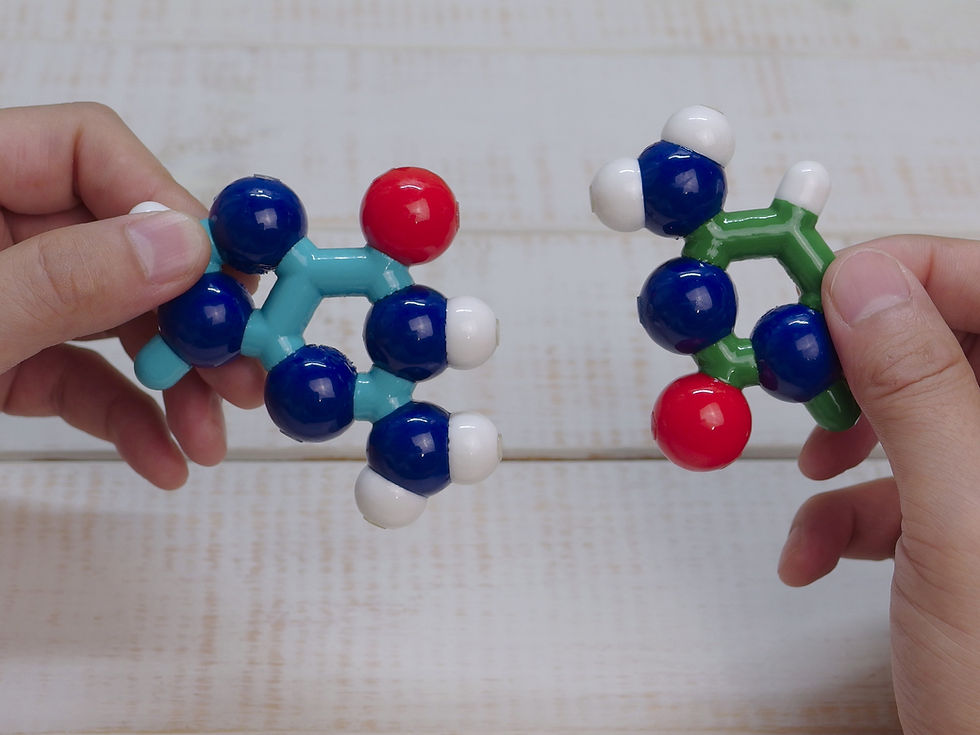top of page
The BasePairPuzzle contains four bases; A (orange), C (green), G (cyan) and U (purple). Their molecular frames with base's color are Carbon atoms. Hydrogen, Nitrogen and Oxygen atoms involved in hydrogen bonding are represented as white, blue and red balls, respectively.
* In order to prioritize easy of production, the BasePairPuzzle has U observed in RNA molecules instead of T found in DNA molecules.


A (Adenine)


C (Cytosine)


G (Guanine)


U (Uracyl)
First, you can just touch the BasePairPuzzle and play without thinking too much. The click feeling and sound may help you understand what is hydrogen bond and base pair.

Re-experience the discovery
of the DNA double helix
James D. Watson found the complementary A-T and G-C base pairs by using four bases out of stiff cardboard, resulting to the discovery of the DNA double helix (Watson & Crick, 1953, Nature). With the BasePairPuzzle, let's re-experience the history-making discovery.
Suddenly, I became aware that an adenine-thymine pair held together by two hydrogen bonds was identical in shape to a guanine-cytosine pair held together by at least two hydrogen bonds. All the hydrogen bonds seemed to form naturally; no fudging was required to make the two types of base pairs identical in shape. Quickly I called Jerry over to ask him whether this time he had any objection to my new base pair.
(James D. Watson, The Double Helix, 1968)

1/2

1/2
Would you be surprised if four bases can form about 150 types of base pairs other than A-T/T-A and G-C/C-G base pairs? In fact, it is known that RNA molecules can take complicated and sophisticated 3D structures by taking several non-Watson-Crick base pairs with different base combinations and geometries (Leontis et al., 2002, Nucleic Acids Res.). With the BasePairPuzzle, how many base pairs can you create?

1/2

1/2
Four bases can form not only "pairs" but also "triplets", "quartets" and even more higher-order complexes. Please discover new base complexes with the BasePairPuzzle.

bottom of page
